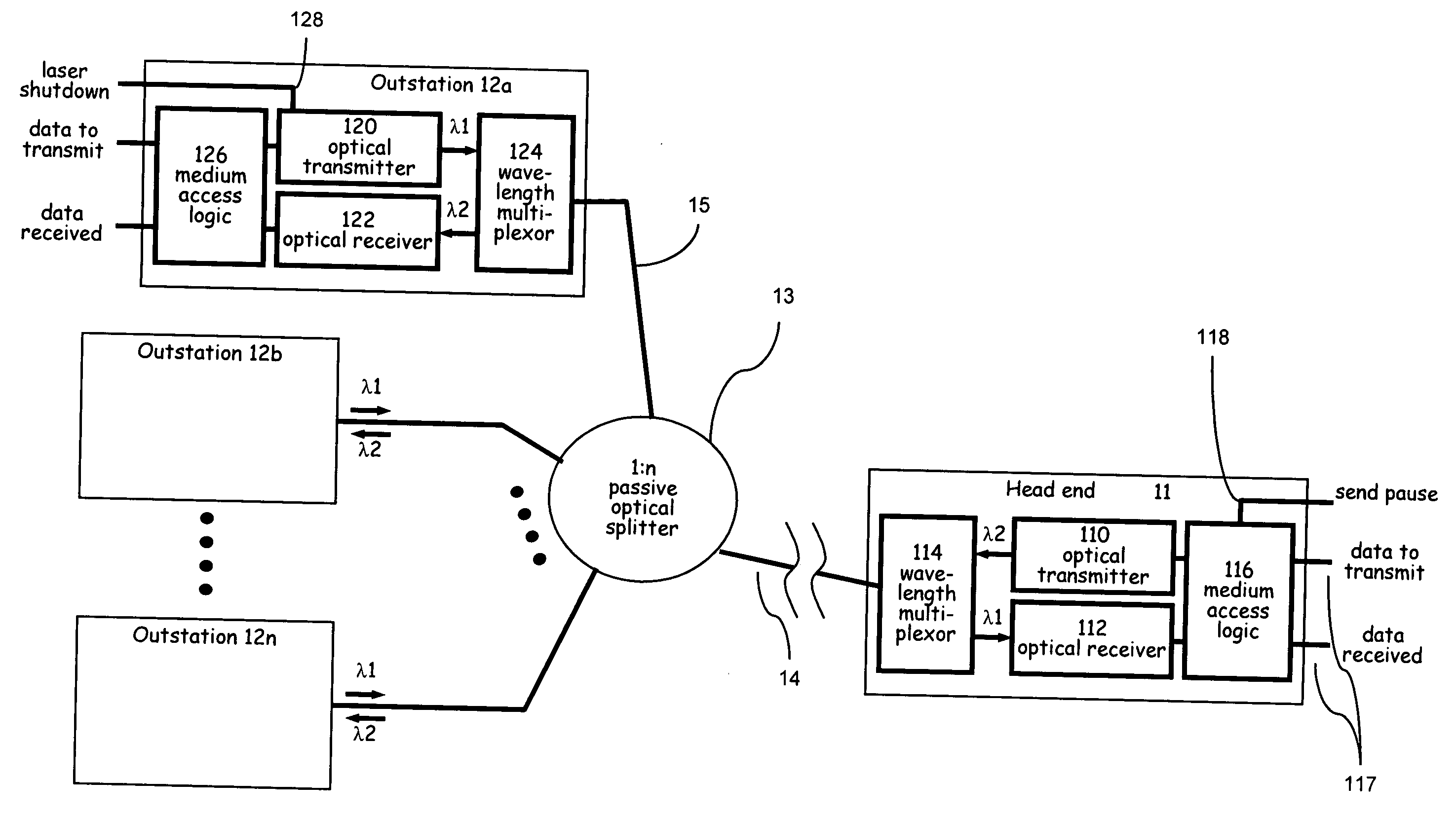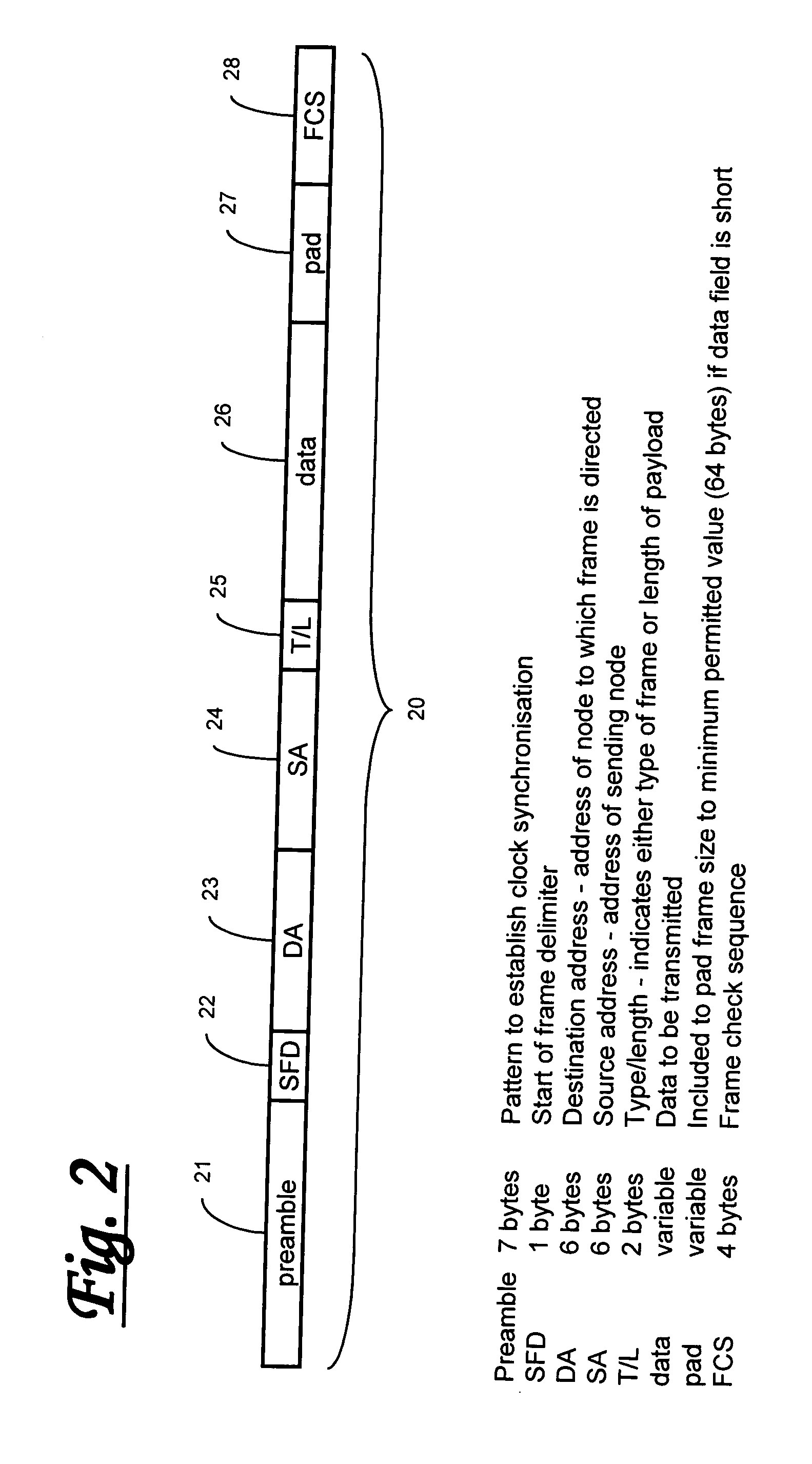Multiple access system for communications network
a communication network and access system technology, applied in the field of access networks, can solve the problems of large-scale integrated circuit technology, high cost, and complex protocol of fsan, and achieve the effect of increasing technical benefits and cost-effective infrastructur
- Summary
- Abstract
- Description
- Claims
- Application Information
AI Technical Summary
Benefits of technology
Problems solved by technology
Method used
Image
Examples
Embodiment Construction
[0082] Referring first to FIG. 1, this shows in schematic form an exemplary FTTH access network in which a head end 11 is connected to a number of customer terminals or outstations 12a-12n through a 1:n passive optical splitter 13 via respective optical fibre paths 14 and 15. Typically, the distance from the head end to the splitter is up to around 5 km. The distance between any two outstations is assumed to be relatively small, typically about 500 m. The splitter 13 is located at a convenient point in the street and requires no power supply. In the system illustrated, downstream and upstream traffic use the same fibres and splitter, but each direction uses a different optical wavelength. Optionally, the network may use separate fibres and splitters for each direction of transmission.
[0083] As shown in FIG. 1, the head end 11 comprises an optical transmitter 110, typically a laser, operating at a first wavelength λ1, and an optical receiver 112 operating at a second wavelength λ2. ...
PUM
 Login to View More
Login to View More Abstract
Description
Claims
Application Information
 Login to View More
Login to View More - R&D
- Intellectual Property
- Life Sciences
- Materials
- Tech Scout
- Unparalleled Data Quality
- Higher Quality Content
- 60% Fewer Hallucinations
Browse by: Latest US Patents, China's latest patents, Technical Efficacy Thesaurus, Application Domain, Technology Topic, Popular Technical Reports.
© 2025 PatSnap. All rights reserved.Legal|Privacy policy|Modern Slavery Act Transparency Statement|Sitemap|About US| Contact US: help@patsnap.com



